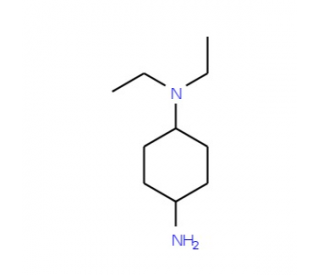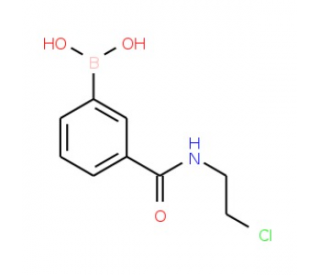详细说明
Species Reactivity
Human
Specificity
Detects human Wnt-7a in direct ELISAs.
Source
Monoclonal Mouse IgG 1 Clone # 946744
Purification
Protein A or G purified from hybridoma culture supernatant
Immunogen
Chinese hamster ovary cell line CHO-derived recombinant human Wnt-7a
Met1-Lys349
Accession # O00755Formulation
Lyophilized from a 0.2 μm filtered solution in PBS with Trehalose. *Small pack size (SP) is supplied as a 0.2 µm filtered solution in PBS.
Label
Unconjugated
Applications
Recommended
ConcentrationSample
Immunocytochemistry
8-25 µg/mL
See below
Please Note: Optimal dilutions should be determined by each laboratory for each application. are available in the Technical Information section on our website.
Data Examples
Immunocytochemistry | Wnt‑7a in HeLa Human Cell Line. Wnt‑7a was detected in immersion fixed HeLa human cervical epithelial carcinoma cell line using Mouse Anti-Human Wnt‑7a Monoclonal Antibody (Catalog # MAB30081) at 25 µg/mL for 3 hours at room temperature. Cells were stained using the NorthernLights™ 557-conjugated Anti-Mouse IgG Secondary Antibody (red; Catalog # ) and counterstained with DAPI (blue). Specific staining was localized to cytoplasm. View our protocol for . |
Preparation and Storage
Reconstitution
Reconstitute at 0.5 mg/mL in sterile PBS.
Shipping
The product is shipped at ambient temperature. Upon receipt, store it immediately at the temperature recommended below. *Small pack size (SP) is shipped with polar packs. Upon receipt, store it immediately at -20 to -70 °C
Stability & Storage
Use a manual defrost freezer and avoid repeated freeze-thaw cycles.
12 months from date of receipt, -20 to -70 °C as supplied.
1 month, 2 to 8 °C under sterile conditions after reconstitution.
6 months, -20 to -70 °C under sterile conditions after reconstitution.
Background: Wnt-7a
Human Wnt-7a is one of about 19 vertebrate members of the Wingless-type MMTV integration site (Wnt) family of highly conserved cysteine-rich secreted glycoproteins important for normal developmental processes (1). Wnts bind to receptors of the Frizzled family in conjunction with low-density lipoprotein receptor‑related proteins (LRPs). Downstream effects of Wnt signaling occur through activation of one of three different intracellular pathways: the canonical Wnt pathway, Wnt/Ca2+ pathway, and planar cell polarity. The highly transforming Wnts, including Wnt-1, -3, -3a, -7a and -8 activate the canonical pathway, which regulates beta ‑catenin-mediated gene expression (1, 2). Human Wnt‑7a is a 48 kDa secreted glycoprotein containing 24 cysteine residues that is expressed by epithelial and epithelially-derived cells of the placenta, kidney, testis, uterus, fetal lung, and fetal and adult brain (3, 4). Palmitate modification of a cysteine residue has been shown for Wnt‑3a; this site is conserved on all Wnts and is Cys73 on Wnt‑7a (5). When modified, increased hydrophobicity and activity is expected. Human Wnt‑7a shows 97% aa identity with mouse, rat, and dog Wnt‑7a and 92% aa identity with chicken Wnt‑7a. During development, Wnt‑7a is expressed by the dorsal ectoderm and drives expression of homeodomain transcription factors that control effectors important in patterning and cell fates in adjacent mesenchyme (6-10). When Wnt‑7a is deleted, mice show disruption of dorsalization and anterior/posterior patterning during limb development and abnormalities in the reproductive tract (6-10). Wnt‑7a is frequently downregulated in leukemia and lung cancers, potentially affecting homeobox (HOX) gene expression, differentiation state and growth control (11, 12). Roles for Wnt‑7a have also been shown during formation of neural synapses, response of the uterus to estrogen and inflammatory cartilage destruction (10, 13, 14). Wnt-7b is a 46 kDa, secreted glycosylated protein that belongs to the Wnt family. Wnt proteins can be lipid-modified and are ligands for members of the frizzled family of receptors, which mediates cell-cell communication during development. Human Wnt-7b is synthesized as a 349 amino acid (aa) precursor that contains a 318 aa mature region. The mature region contains 24 cysteines and three potential N-linked glycosylation sites. Wnt-7b is a ligand for members of the frizzled family of seven transmembrane receptors. Probable developmental protein. May be a signaling molecule which affects the development of discrete regions of tissues. Is likely to signal over only few cell diameters. Mature human Wnt-7b shares 99% aa sequence identity with mature mouse and rat Wnt-7b. Wnt-7b also shares 80% aa sequence identity with Wnt-7a.
References:
Logan, C.Y. and R. Nusse (2004) Annu. Rev. Cell Dev. Biol. 20:781.
Wong, G. T. et al. (1994) Mol. Cell. Biol. 14:6278.
http://www.stanford.edu/~rnusse/wntwindow.html
Bui, T. D. et al. (1997) Gene 189:25.
Willert, K. et al. (2003) Nature 423:448.
Parr, B.A. and A.P. McMahon (1995) Nature 374:350.
Cygan, J.A. et al. (1997) Development 124:5021.
Parr, B.A. and A.P. McMahon (1998) Nature 395:707.
Miller, C. and D. Sassoon (1998) Development 125:3201.
Carta, L. and D. Sassoon (2004) Biol. Reprod. 71:444.
Calvo, R. et al. (2000) Proc. Natl. Acad. Sci. USA 97:12776.
Winn, R.A. et al. (2005) J. Biol Chem. 280:19625.
Hall, A.C. et al. (2000) Cell 100:525.
Hwang, S-G. et al. (2004) J. Biol. Chem 279:26597.
Long Name:
Wingless-type MMTV Integration Site Family, Member 7a
Entrez Gene IDs:
7476 (Human)
Alternate Names:
protein Wnt-7a; proto-oncogene Wnt7a protein; wingless-type MMTV integration site family, member 7A; Wnt7a; Wnt-7a











 粤公网安备44196802000105号
粤公网安备44196802000105号